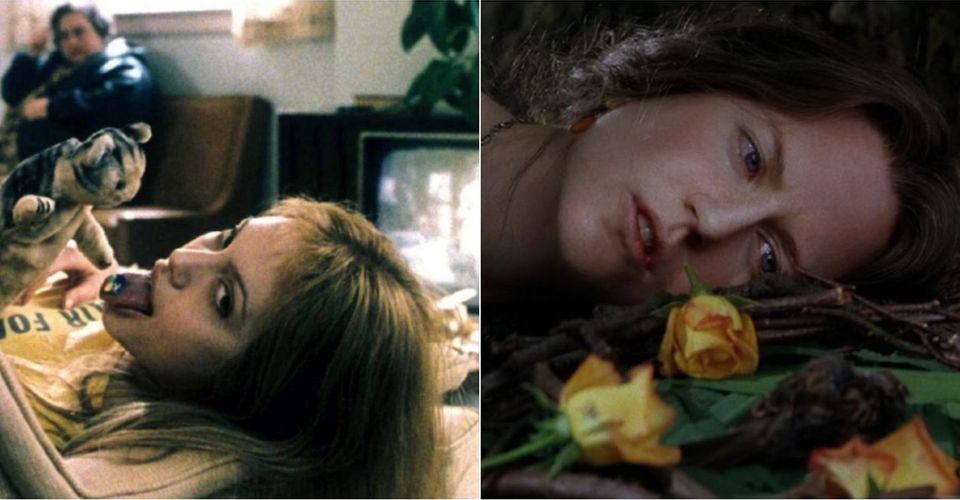10 Best Artist Biopics, Ranked According To IMDb

Art is naively characterized as a luxury that most people can’t afford or has no purpose if it doesn’t serve to entertain. Such a characterization couldn’t be more out of touch with the artists behind the great works that command an audience’s attention, earning them their own movie biographies.
Often as consumers of art, we admire work, yet don’t know anything about the artist who made it. Artist biopics resolve this issue. They put audiences in closer contact with the artists who created the work they love or draw attention to those artists that didn’t receive the recognition they deserved in their lifetime. To narrow the scope of the broad categorization of “artist,” the following biopics focus only on painters and writers.
10 The End Of The Tour (7.3)

Before concluding his cross-country book tour of his 1,100-page magnum opus Infinite Jest, American novelist David Foster Wallace completes one last interview at his small-town Illinois home. The interviewer is Rolling Stones journalist David Lipsky, a burgeoning writer in his own right, yet only experiencing marginal success.
This bitterness injects Lipsky’s skepticism of the praise Wallace’s book is receiving with unconscious jealousy. What unfolds is a head-to-head that has Wallace reluctantly acknowledging his neurotic genius that Lipsky, in a paradoxical combination of envy and awe, pressures him to confront. Jason Segel and Jesse Eisenberg star, and their on-screen chemistry creates a furious witches’ brew of adversity and turmoil that is magnetizing.
9 Capote (7.3)

The greatest of the many outstanding achievements of the late-great Philip Seymour Hoffman, his portrayal of American writer Truman Capote is startlingly accurate, earning him the Oscar for Best Actor. Hoffman disappears into the role of Capote. He captures the register of the writer’s high pitched Louisiana drawl and pedantic details of his body language to such an exact degree that the difference between Hoffman’s Capote and the real man is indistinguishable.
Following Capote’s life during the writing process of his famous crime novel In Cold Blood, the movie depicts an artist in a moral conflict, infatuated with the completion of his masterpiece and the fatal consequences that mean for the protagonist of his work.
8 Girl, Interrupted (7.3)

Based on the memoir of the same name, Girl, Interrupted portrays author Sussana Kaysen’s 18-month experience as a patient at a psychiatric hospital after she tries to commit suicide. The movie is in the same vein as One Flew Over The Cuckoo’s Nest, but it has a more sinister tone. Part of this darker mood comes from how the movie doesn’t shy away from topics of self-harm, suicide, sex, drug abuse, and self-image issues, most of which circle in the cataclysmic orbit of the sociopath Lisa.
These difficult topics are handled tactfully, and moments of humor keep the movie light on its feet, despite the chaos the women battle through. It is also Sussana’s story, of how a lonesome young woman finds friendship with those who share similar struggles, the eventual severing of that friend circle, and how Sussana discovers herself.
7 Frida (7.4)

This biographical film about the Mexican surrealist painter Frida Kahlo tracks the origins of her beginning as a painter, but equally as important, her life as a woman in the male-dominated art world. Her tumultuous relationship with her husband Diego Rivera is central to this struggle, but also to her polyamorous bohemian lifestyle and the friction that causes in her family and ideological convictions.
The movie creatively incorporates Frida’s work. At each new chapter, one of Frida’s paintings appears, characterizing this period in her life, and then dissolving into live-action.
6 Saving Mr. Banks (7.5)

Giants of the industry, Emma Thompson and Tom Hanks join forces as they depict author P.L. Travers, author of the Mary Poppins books, and none other than Walt Disney.
On paper, a story about Walt Disney attempting to acquire the screen rights to Travers’ novels doesn’t blow one’s hair back in excitement, but the different levels of emotion Emma Thompson can channel as the deal revives memories of her troubled childhood wring the heart. Enter Tom Hanks, whose consoling voice and depiction of Disney’s gentle nature shows Travers the healing power of his art, as she fights off her demons, letting them go for good.
5 The Hours (7.5)

Virginia Woolf is one of the greatest female writers to have ever lived and possibly one of the greatest authors to have ever written. Following in the style of Woolf’s novel Mrs. Dalloway, The Hours is a day in the life of the artist and how her struggle with depression simultaneously fuelled and detracted from her creative genius.
Structured as a non-linear narrative, the movie also follows the lives of two other women, one in the 1950s and the other in the 2000s. Their unhappiness mirrors Woolf’s depression. Woolf’s writing articulates the beauty and suffering of life as a woman, and the two characters realize that they are not alone, connected with all women throughout all times in their common experience and struggle. Her book, Mrs. Dalloway, gives them the will to persevere that the author sadly lost.
4 Trumbo (7.5)

On the eve of McCarthyism, Hollywood took a strong anti-Soviet stance, blacklisting members of the industry for their suspected or open support of the Communist Party of the U.S.A. Many famous writers, directors, and actors had their careers ruined, or were sent into exile overseas so they could continue working.
Among those ostracized was screenwriter Dalton Trumbo. The movie shows how being blacklisted landed Trumbo in prison for 11 months and subsequently strained his creative, financial, and family life. His story deserves movie treatment because he was uncredited for two screenplays he wrote, Roman Holiday and The Brave One, to protect him from the authorities. Both movies won Oscars that he tragically could not claim, and would not earn acknowledgment for until decades later.
3 Maudie (7.6)

Maud Dowley was a provincial painter from a small coastal town in Nova Scotia, Canada. Her family views her as not amounting to much, and determined to escape their oppressive household, she moves in as a maid for a jagged-mannered fish peddler named Everett. She beings painting Everett’s house, discovering her talent and love of painting. To her dismay, her chronic arthritis is constantly at odds with her ability to paint and she becomes the target of local gossip, which excludes her from the community.
Never shaken, Maud turns Everett’s house into her canvas, and it’s only after she gains success as a painter that people start to accept her. The movie celebrates the extraordinary individuality of a folk artist who defied the prejudices of ordinary people that couldn’t understand her.
2 Fear And Loathing In Las Vegas (7.6)

Johnny Depp had the pleasure of depicting his friend, the late journalist turned novelist and mind-altering substance connoisseur, Hunter S. Thompson. Adapted from Thompson’s book of the same name, Fear and Loathing in Las Vegas may be a source of drug-fuelled laughs for some, but the authors’ never-ending quest to alter his conscious parallels his observations on the American Dream.
Both are chimeras because they function only as illusions that distract one’s attention away from their true aim. It may come as no surprise that a man whose daily life was invaded by psychedelic hallucinations also viewed the national myths forming the bedrock of his country as a “bad trip.”
1 Loving Vincent (7.8)

Consisting of 65,000 individually oil-painted frames in Vincent Van Gogh’s singular impressionistic style, Loving Vincent is a labor of love that reimagines the final days of the famous Dutch painter. Equipped with the last letter Van Gogh wrote, a postman’s son named Armand travels to Auvers-sur-Oise, outside of Paris, where Vincent lived out his last days, aiming to deliver the letter to Vincent’s doctor and friend, Dr. Paul Gachet.
Armand knows that Van Gogh described himself as calm and amiable only weeks before he committed suicide, so suspicious of his death, upon Armand’s arrival, he embarks on an investigation. It puts him in contact with those closest to Vincent before the time of his suicide, retracing the painter’s movements. The stories Armand collects during his investigation draw a character sketch of the noble, kind-hearted, though adversarial, personality of one of art’s most inspiring figures.
About The Author

















